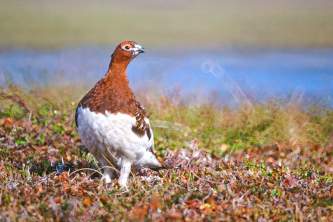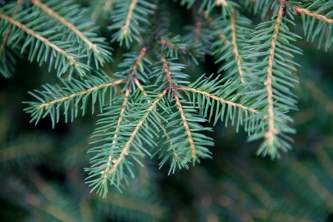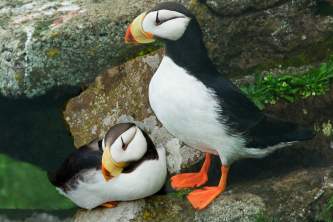Alaska Kayaking Seasons
Locals suggest planning a trip between May 1st and June 15th, or after August 10th. This allows you to avoid the busiest part of the tourism season, during which sight-seeing boat traffic is higher, competition for campsites increases, and it’s more difficult and/or expensive to "get away" for the type of wilderness experience you may be seeking. Here are a few basic seasonal guidelines you can use to decide what the best time frame is for your trip.
Early Season (May 1st – June 15th)
Early season is pre-bug, pre-tourist, with good chances for relatively stable weather and flatwater paddling conditions. Boat and guide service personnel may be capable of providing more information and assistance in trip planning than during busier times. Be prepared for snow camping by having adequate padding(insulation) for your sleeping bag (extra therma-rest).
Prince William Sound can get 400-500 inches of snow at sea level. With this in mind, north facing beaches and shorelines may be snow-covered through Memorial Day. Even south facing beaches will be holding snow well into May. One big plus of snow camping is that your sleeping locations are softer than gravel.
Peak Season (June 15th – August 10th)
If looking for privacy, hiring a boat charter for drop-off and pick-up increases your chances. Those areas with fewer people will be those areas with fewer glaciers (ex. Eaglek Bay or Perry Island). Areas such as Blackstone Bay and Harriman Fjord are operating at 110% of capacity during peak tourist season. If paddling from Whittier, give yourself plenty of time to find a camping spot. Don’t start looking for a camping spot later in the day as you may need to keep paddling to another site.
Many people choose to be dropped off and paddle back to Whittier. The catch with this plan is dealing with heavy winds and lots of boat traffic coming into port. This is especially true paddling back to Whittier in the afternoons. Plan your schedule accordingly.
Late Season (August 10th – September)
Tourist levels drop after mid-August, opening up more campsites and cabins. Shortened days puts a premium on camp comforts such as warm & dry clothes, good food, and a book, journal, or deck of cards. If camping in proximity to salmon streams and berry patches, be bear aware.
Weather and sea-conditions get more unpredictable as autumn approaches. The likelihood of being stranded in camp for longer periods of time increases exponentially the later in the season, as the storms get bigger and last longer. Planning a trip beyond September should be entirely contingent on current, reliable weather forecasts. If planning a late-season trip ahead of time, the general rule of thumb in Prince William Sound is to include a 50% ratio of weather days in your paddle plan (an anticipated 4-day trip becomes 6 days).




